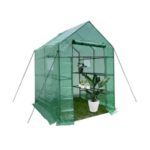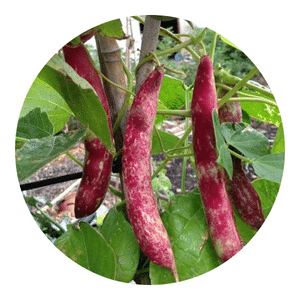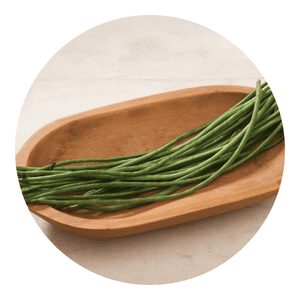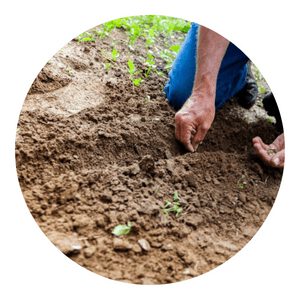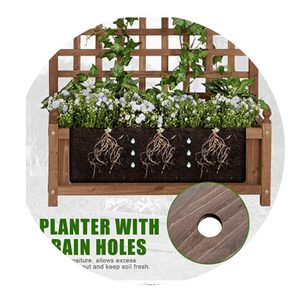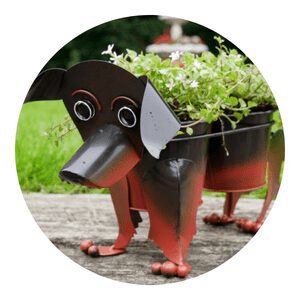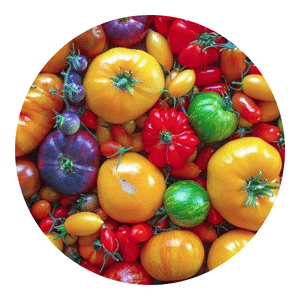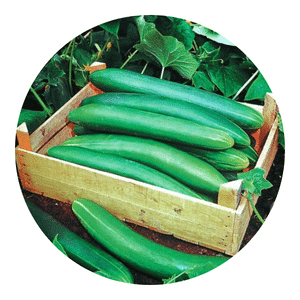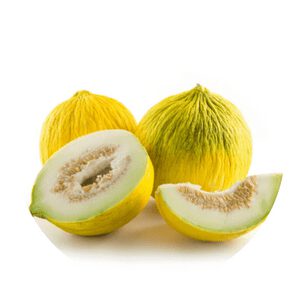How to grow organic beans
Organic beans are a healthy and delicious addition to any diet, and they’re easy to grow at home with just a little bit of planning.
Here are some tips on how to grow organic beans:
Bean
How to Plant Beans
Organic beans are a healthy and delicious addition to any meal. They are also easy to grow! With just a few simple steps, you can have your own organic beans in no time.
Here’s how to plant beans:
1. Choose a sunny spot in your garden. Beans need at least 6 hours of sunlight each day.
2. Prepare the soil by loosening it with a shovel or rake. Then, add some compost or manure to help the beans grow.
3. Plant the beans about 1-2 inches deep, and space them about 2-3 inches apart.
How to Care for Your Bean Plants
Beans are a warm-season crop that should be planted after all danger of frost has passed and the soil has warmed. They are typically planted in early to mid-summer.
Beans grow best in full sun but will tolerate some light shade, especially during the hottest part of the day.
They need well-drained, fertile soil with a pH between 6.0 and 7.0. Add compost or other organic matter to your planting bed before you plant to improve drainage and fertility.
How to Harvest Your Beans
Organic beans are a delicious and nutritious addition to any meal. They are also easy to grow, and can be harvested in just a few simple steps.
To harvest your beans, simply wait until the plants are dry and the pods are brown.
Then, cut the plants down and remove the pods. Be sure to open the pods and remove the beans before cooking or eating them.
With just a little bit of care, you can enjoy fresh, organic beans all year long!
Plant varieties:
If you’re looking to grow your own beans, there are many different varieties to choose from.
Here are a few of the most popular types of beans:

Qing Bian Romano
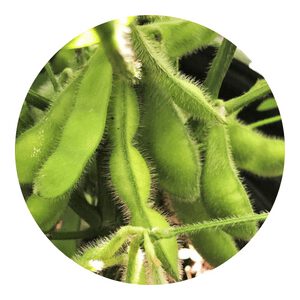
Midori Giant Edamame
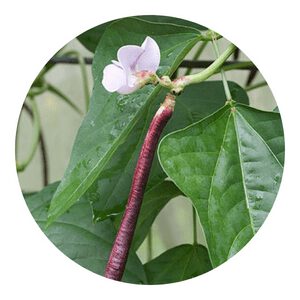
Red Noodle

Chickpeas
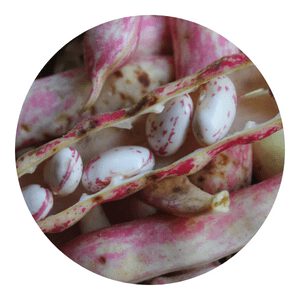
Pinto

Black
To grow organic beans, you need a little bit of land. Fertile soil and some water are all that's required to get them started. They'll need some sun and room to climb, so give them a good trellis to wind their way up. With just a little time and care, you'll soon be enjoying home-grown organic beans.
Chappy The Gardener
What are the pests and diseases of beans?
If you’re growing organic beans, you’ll need to be on the lookout for pests and diseases.
The most common pests are bean beetles, aphids, and caterpillars. Diseases include bacterial blight, mosaic virus, and powdery mildew.
To keep pests and diseases at bay, start with healthy seedlings and practice good garden hygiene.
Inspect your plants regularly and remove any affected leaves or stems.
Use row covers or floating row covers to prevent beetles from getting to your plants.
And finally, rotate your crops so that beans don’t grow in the same spot year after year.
Organic Fertilizers That Will Boost Bean Growth
Organic fertilizers are a great way to boost bean growth.
Here are a few of the best organic fertilizers for beans:
Composted manure
Composted manure can give your bean plants the boost they need to grow healthy and strong.
This natural fertilizer is full of nutrients that will help your plants to thrive.
Here’s how to use it to your advantage:
1. Add composted manure to your planting hole when you’re setting out your beans. This will give them a nutrient-rich start.
2. side-dress your bean plants with composted manure during the growing season. This will provide them with a steady supply of nutrients as they continue to grow.
3. Use composted manure as mulch around your bean plants. This will help to keep the soil moist and encourage healthy growth.
By using composted manure in these ways, you’ll be sure to see a difference in your bean plants’ performance. So don’t hesitate to give it a try!
Blood meal
Harvesting your own beans can be a rewarding experience. Not only do you get to enjoy the fruits of your labor, but you also get to know where your food comes from.
Growing organic beans is not difficult, but there are a few things you need to do in order to ensure a bountiful harvest.
One of the most important things you can do for your bean plants is to provide them with blood meal.
Blood meal is a natural fertilizer that is high in nitrogen and will help boost bean growth. You can purchase blood meal at your local gardening store or online.
Another way to encourage healthy bean growth is to water your plants regularly.
Beans are drought-tolerant, so they don’t need a lot of water. However, during periods of extended dry weather, it’s important to give them an extra drink.
Bone meal
Growing your own organic beans is a healthy and sustainable way to get your daily dose of protein. But getting the beans to grow can be tricky.
One way to give your bean plants a boost is to add bone meal to the soil.
Bone meal is rich in phosphorus and nitrogen, two nutrients that are essential for healthy plant growth. Phosphorus helps plants develop strong roots, while nitrogen promotes leafy growth.
Adding bone meal to the soil around your bean plants will give them the extra boost they need to grow big and strong.
If you’re looking for an easy way to get started with growing organic beans, try adding bone meal to your soil.
With a little help from this natural fertilizer, you’ll be on your way to a bountiful harvest in no time.
Mushroom compost
Organic farmers have long known the benefits of using mushroom compost to boost bean growth. This natural fertilizer is packed with nutrients that help plants thrive.
Now, new research has shown that mushroom compost can also help beans resist disease and pests.
Mushroom compost is made from the straw and manure of mushrooms. It is rich in nitrogen, phosphorus, and potassium, as well as other essential nutrients.
These nutrients help plants grow strong roots, stems, and leaves. Mushroom compost also contains beneficial fungi that help plants resist disease.
To use mushroom compost, simply mix it into the soil around your bean plants. You can also add it to your compost pile.
Be sure to add plenty of organic matter to your pile, such as leaves and grass clippings, to balance out the high nitrogen content of the mushroom compost.
How long do beans take to grow?
Beans are a fast-growing crop, and most varieties will be ready to harvest in 60-90 days.
Bush beans will mature earlier than pole beans, so if you’re short on space or time, go with bush beans.
Once the plants start to produce flowers, the beans will be ready to pick in about two weeks.
Check them regularly and pick them when they’re plump and firm. If you wait too long, the beans will become tough and stringy.
So whether you’re looking for a quick crop or want to extend your harvesting season, organic beans are a great option for the home gardener.
What is the best month to plant beans?
May is the best month to plant beans. The weather is warm but not too hot, and there is plenty of rain. This ensures that the beans will have enough water to grow.
June is also a good month to plant beans. The weather is warm, but there is less rain. This means that you will need to water the beans more often, but they will still grow well.
July is a good month to plant beans if you live in a cooler climate. The weather is cool, but there is still some rain. This means that the beans will not dry out and will have enough water to grow.
How many beans will one plant produce?
One plant can produce about 60 beans. If you want a bigger harvest, you can grow more plants. You’ll need about 50 to 100 plants to get a good supply of beans for your family.
You can grow different kinds of beans, such as black beans, pinto beans, and kidney beans. They all have different growing times, so make sure to check the seed packet for specific instructions.
How often do beans need to be watered?
If you’re growing your own beans, you’ll need to know how often to water them.
Beans need to be watered regularly, about once a week. However, they don’t like to be waterlogged, so make sure the soil is well-drained.
Overwatering can lead to fungal diseases.
How late can I plant beans?
Beans are a versatile and easy-to-grow crop that can be planted in the spring or summer. However, there is a limit to how late you can plant beans.
The last frost date is typically the cutoff for planting beans, as they need about 60 days to mature. If you plant beans too late in the season, they may not have enough time to produce pods before the first frost.
You can extend the growing season by planting bean seeds indoors and then transplanting them outdoors after the last frost date.
This will give your beans a head start on the growing season. You can also protect plants from early frost by covering them with a light fabric or plastic sheeting.
With a little planning, you can enjoy fresh, homegrown beans all season long!
Will beans grow in winter?
Beans are a relatively easy crop to grow, and they can be harvested throughout the winter months. However, there are a few things to keep in mind when growing beans in winter.
First, it’s important to choose the right variety of bean for your climate. Some beans, like lima beans, need warm weather to thrive.
If you live in an area with cold winters, you’ll want to choose a bean that is more tolerant of cooler temperatures, such as a white kidney bean or black turtle bean.
Second, make sure you have enough space in your garden for the plants to spread out. Beans can get quite large, so they’ll need plenty of room to grow.
Finally, don’t forget to water your plants regularly.
The best method to grow organic beans
Organic beans can be a healthy and delicious addition to any diet, and they’re relatively easy to grow at home. Here’s a step-by-step guide to growing organic beans in your own backyard.
First, choose a sunny spot in your yard for your bean plants. They’ll need at least six hours of sunlight per day. Prepare the soil by loosening it with a spade or tiller, then mix in some organic compost.
Next, sow the beans directly into the ground or into biodegradable pots filled with potting mix. Water them well and keep the soil moist throughout the growing season. Beans will typically start to sprout within 10 days.
As the plants grow, support them with stakes or cages so they don’t topple over when heavy with beans.
How to grow beans hydroponically
Organic beans are a healthy and delicious addition to any diet, and they can be grown hydroponically with relative ease. Here are a few tips on how to get started:
1. Choose the right beans. Some varieties of beans, like black-eyed peas and lentils, are better suited for hydroponic growth than others. Do some research to find out which type of bean will work best for your setup.
2. Start with seeds or seedlings. Beans can be grown from seed, but starting with seedlings will give you a head start on the growing process.
3. Get your nutrient solution right. Beans need plenty of nitrogen, phosphorus, and potassium to grow well. Make sure your nutrient solution is balanced and tailored to the needs of beans.
4. Provide adequate support.
How to grow beans in a greenhouse
If you want to learn how to grow organic beans in a greenhouse, then you’ve come to the right place. In this article, we’ll give you some tips on how to get started.
First of all, you’ll need to make sure that your greenhouse is big enough to accommodate the number of plants that you want to grow. You’ll also need to make sure that it has good ventilation and drainage.
Once you have those things sorted out, you can start planting your beans. You’ll need to water them regularly and give them plenty of sunlight. If you do all of those things, then your beans should grow just fine.
How to grow beans in a containers
If you’re limited on space or want to grow your plants up instead of out, beans are a great option. They don’t take up much room and can be grown in a variety of containers. Here’s how to grow organic beans in a container:
Start with a good quality potting mix and fill your container about three-quarters full. Plant your seeds about an inch deep and water well.
Place your container in a sunny spot and keep the soil moist but not soggy. Once the plants start to flower, you’ll need to fertilize them every two weeks or so.
Beans are ready to harvest when the pods are plump and the seeds inside are clearly visible. Simply snap the pods off the plant and enjoy!
How to grow beans aquaponics
Organic beans are a healthy and delicious addition to any diet, and they can be easily grown at home with an aquaponics system. Aquaponics is a type of hydroponic gardening that uses fish waste to fertilize the plants, and it is a great way to grow organic vegetables with little effort. Here are some tips on how to grow organic beans in an aquaponics system:
1. Choose the right variety of bean for your climate. Some varieties of beans, such as lima beans, need warm temperatures to thrive, while others, like black-eyed peas, can tolerate cooler weather.
2. Plant the seeds in grow plugs or net pots filled with a hydroponic growing medium, such as coco coir or vermiculite.
3. Place the seeds in a tray or container filled with water. Germination usually takes anywhere between five and ten days, depending on the type of bean you are growing.
4. When the sprouts are about an inch long, transplant them into your aquaponics system.
5. Put a floating row cover over the top of your aquaponics system to keep out pests.
Seed growth:
Sowing of beans:
It is recommended to soak until germination or at least soak for several hours and change water every few hours
Preserving bean seeds until sowing:
Dry place
Bean sowing date:
Spring (March)
Bowing sowing distance:
Climbing varieties are recommended 30-40 cm, living varieties are possible every few cm
Depth of bean sowing:
0.4-1 cm from the top
Conditions for sowing beans:
It is recommended to soak before sowing
Watering bean seeds:
Reasonable + v
Bean germination time:
3-6 days
Bean sprout conditions?
Full sun, regular watering
Plant Information:
Organic Bean Growing Conditions:
The dahlia in the climbing varieties
How to get beans for organic growing:
Seeds
Disadvantages of growing beans:
Cheaper to buy
Irrigation conditions in bean cultivation:
Medium watering
Light conditions in optimal condition for growing beans:
Full sun
Recommended date for planting beans:
Spring (March, some varieties can be sown but later than March)
Pests of the bean plant:
Worms and more
Is it worth buying a complex variety of beans:
No
Bean pruning date:
At the end of the season
Bean pruning:
Take out the plant and herd it in the ground
Bean plant size:
30-60 cm, the climbing shrubs reach up to 3 m and sometimes even longer
Bean growth rate:
Rapid growth
You can also grow beans in a pot:
Yes
Flowering plant:
Flowering date for beans:
Spring (about a month from sowing)
Bean pollination is carried out by:
Bees
General information about the bean flower:
Flowers consisting of two parts, in pink, white, purple and more
Dilution of bean blossoms:
Lack of irrigation
fruit:
Date of bean yield:
Late spring / summer
Pests in growing beans:
Worms, lack of knowledge when to pick
What can be done with quantities of bean fruit?
Cook, stews, soups, fresh
Work requirements on the bean fruit:
Know when to pick
How long does it take for the beans to bear fruit?
60 days for live pods, 80-100 days for dried beans
In conclusion, growing organic beans is a great way to start an organic garden.
With a little bit of planning and some basic knowledge, anyone can grow organic beans successfully.
With the right care and attention, your organic bean plants will provide you with a bountiful harvest of delicious, healthy beans. So what are you waiting for?
Get started today and enjoy the many benefits of growing your own organic beans.
Helps Us Grow – Share If You Like



